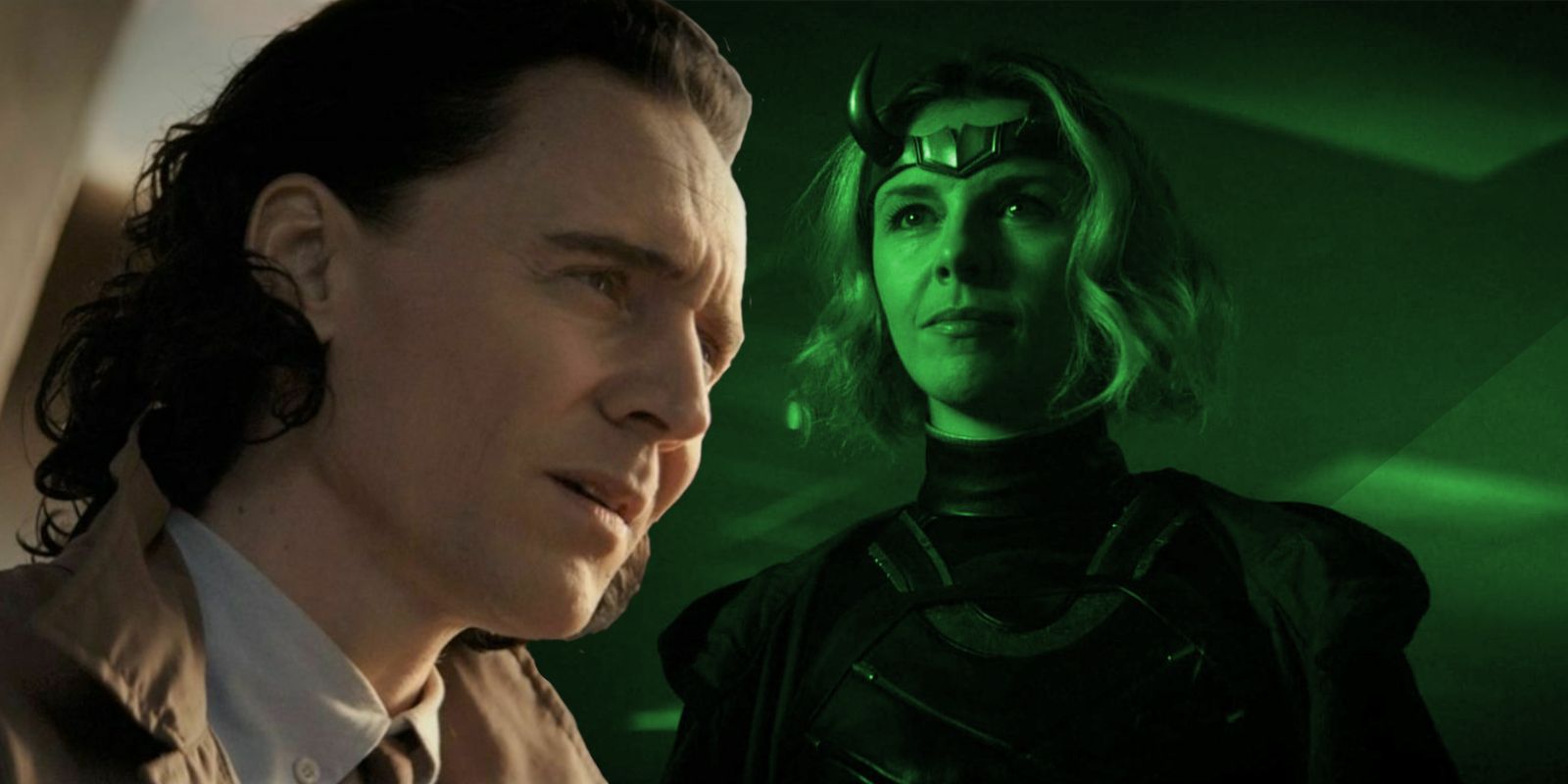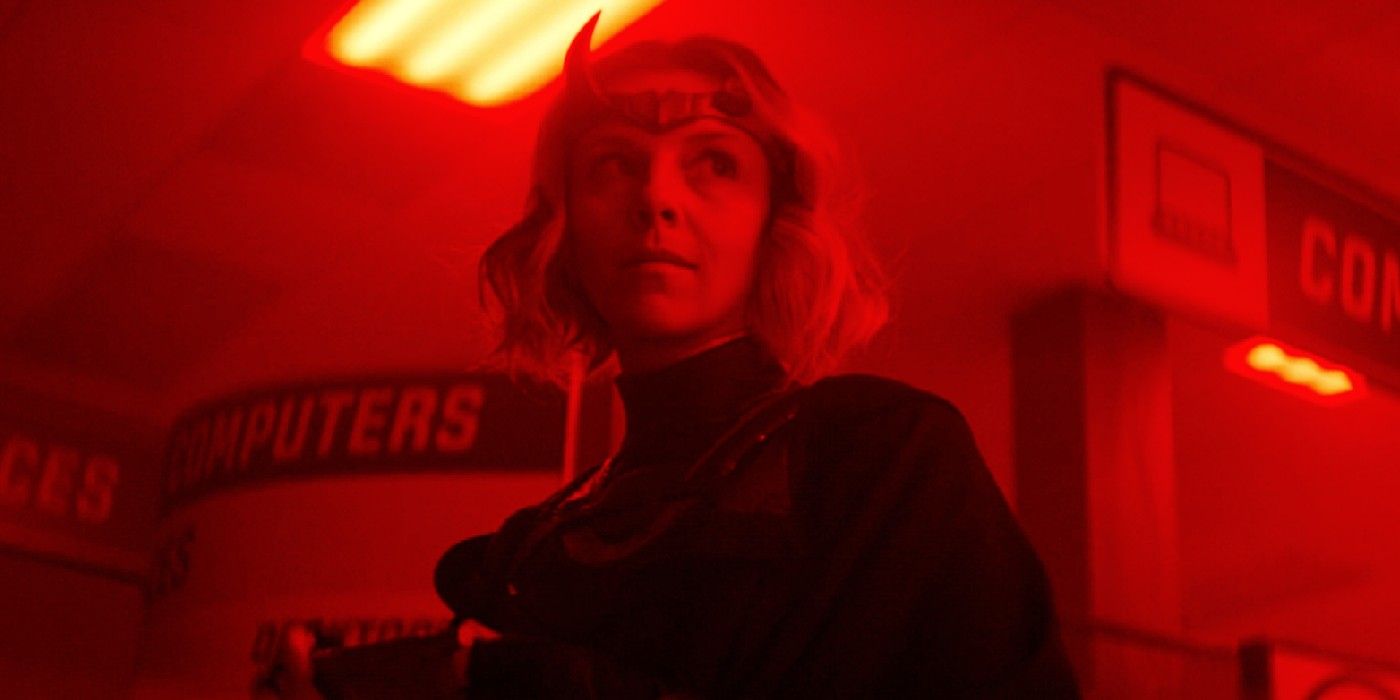
Warning: Contains SPOILERS for Loki episode 2.
Loki's God of Mischief is confirmed to be genderfluid, which is a reveal based in both Marvel Comics and the Norse mythology behind the character. Loki episode 2 ostensibly revealed The Variant to be a female version of Loki. The revelation of Lady Loki (played by Sophia Di Martino) in the Loki series may seem new, but it's rooted in the character's history. Here's the breakdown on Loki's genderfluid identity.
In Loki episode 2, "The Variant," Loki and Mobius have begun tracking down the Loki variant that is attempting to destroy the Sacred Timeline. Despite some mischief, the pair are able to work successfully together and locate where on the timeline this new variant is hiding. They track the Variant down to a Roxxcart in Haven Hills, Alabama in the year 2050, and a Minutemen unit is sent out to apprehend the Variant — only to find out that the variant they've been tracking is indeed a female version of Loki. The Variant isn't the first time Loki has taken on a feminine presentation, both in Marvel history and Norse mythology.
Both show creators and Tom Hiddleston himself are eager to explore this facet of Loki's identity. Loki's TVA file lists his sex as "fluid" — while sex and gender are two different concepts, Loki's shapeshifting powers allow him to shift his sex to fit the fluidity of his gender. In an interview with Inverse, Michael Waldron, head writer of Loki, says the show is very excited to provide this representation for fans who identify with Loki and that the show worked hard to do it properly. Tom Hiddleston explains that his genderfluid identity has "always been there in the comics for some time and in the history of the character for hundreds, if not thousands of years."

Lady Loki made her first appearance in the Marvel comics in 2008. In Thor Vol. 3 #5, Lady Loki was reborn into the body of Lady Sif after the events of Ragnarok. Since then, Lady Loki has appeared in several arcs throughout the comics, and every time, Loki's female identity has been embraced. She still retains Loki's mind and personality — but, she exists as a woman and is referred to using she/her pronouns. In Original Sin Vol 1 #2, a male Loki refers to the fact that, sometimes, he is a "fair maiden." Odin has also referred to his children as "my son, my daughter, and my child who is both." In 2019, the novel Loki: Where Mischief Lies by Mackenzi Lee made Loki's genderfluid and pansexual identities official Marvel canon.
Marvel didn't create Loki's genderfluid identity for the purposes of their character; that trait takes its material straight from Norse mythology itself. Throughout Norse mythos, Loki has taken on multiple forms of varying genders. In the myths, the trickster god had the ability to change his shape and sex at will. Typically, he takes on a male form, and he fathered multiple children while presenting as a man. But when Loki shifted to a feminine presentation, she was referred to as a woman and she/her pronouns were used, just as in the Marvel comics. At one point, Loki even becomes pregnant and mothers a child. Loki's name, Laufeysson, even defies Norse gender norms — instead of taking his father's name, as boys did, Loki's name is comprised of his mother's name, Laufey, and the male suffix, -son (although the MCU's use of Lafeyson does refer to his father). With the introduction of Lady Loki into Loki, it seems Marvel is making more connections to the God of Mischief's Norse origins.
Loki releases new episodes Wednesdays on Disney+.
https://ift.tt/3iXKapR
June 22, 2021 at 12:37AM




